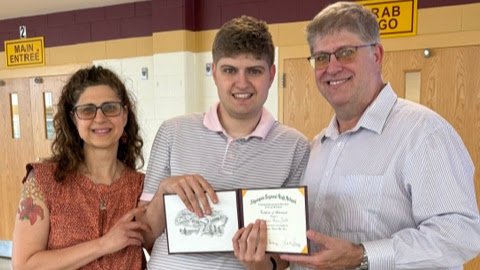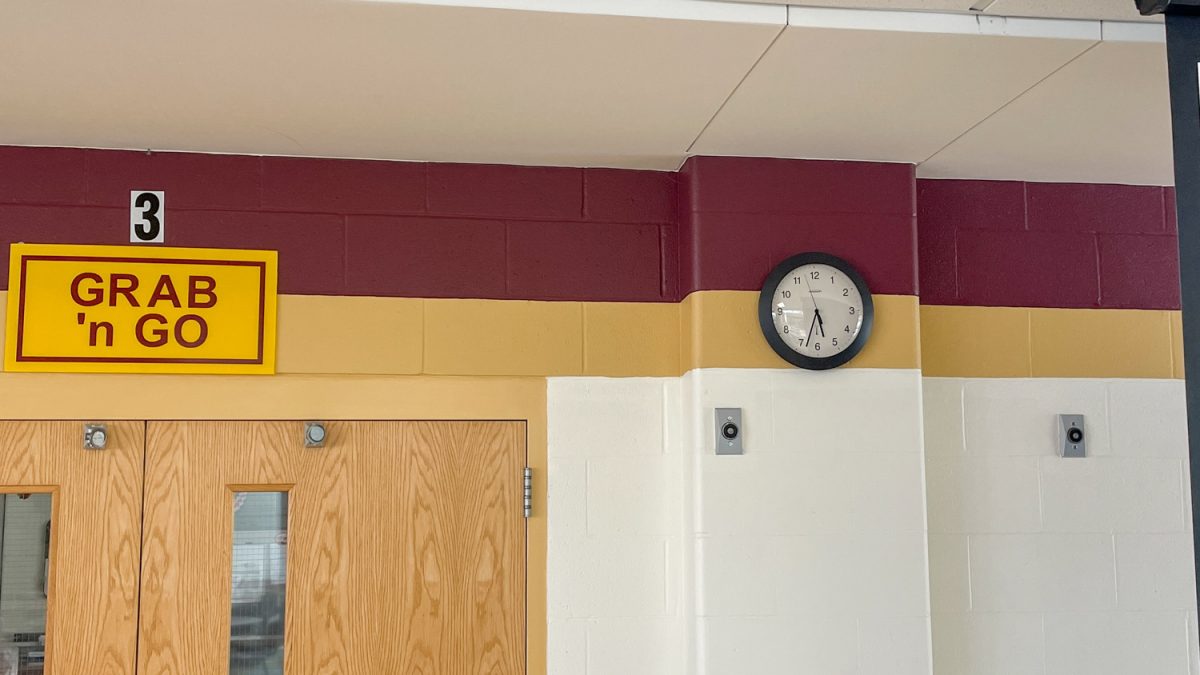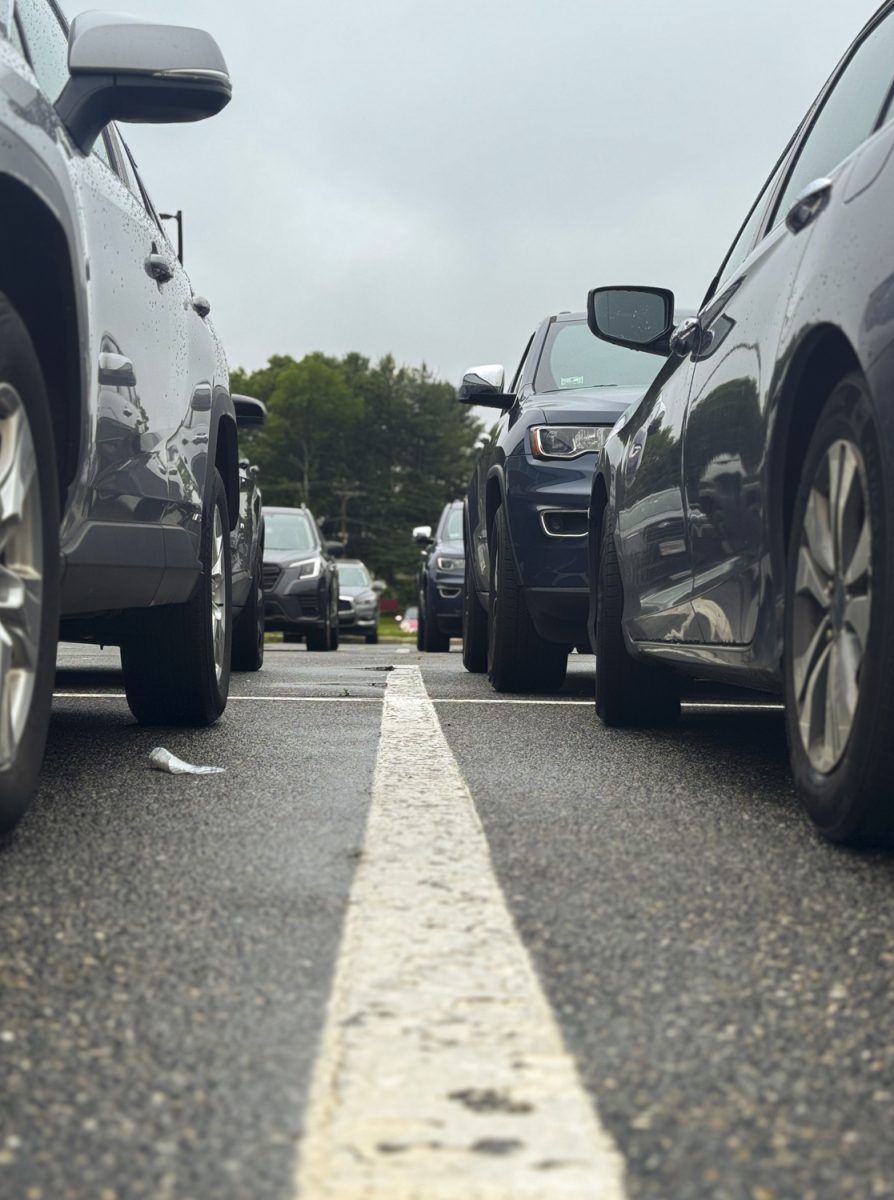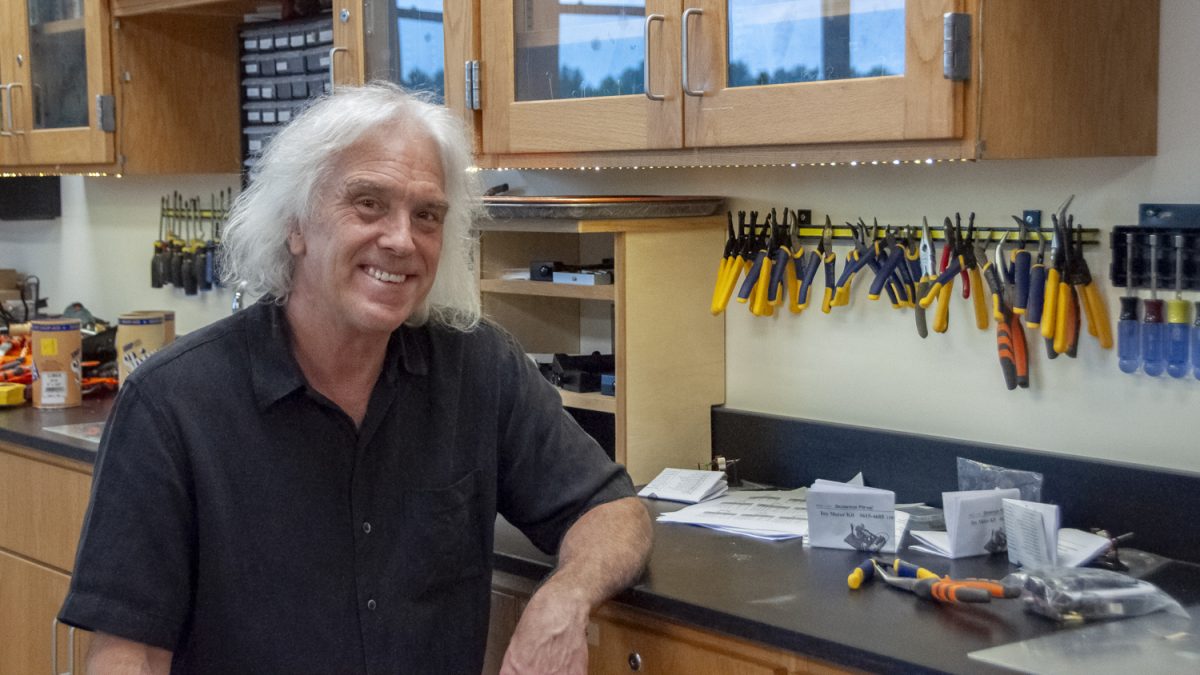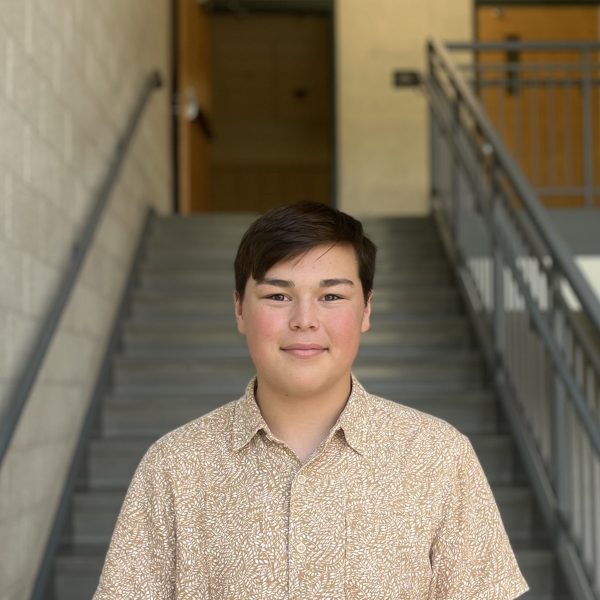Racist graffiti was found written on a student’s desk last Friday Nov. 8, launching an investigation into the hate crime.
Reported by a student to teachers and administration, the graffiti contained the n-word written in pencil, according to an email sent to the Algonquin community by Principal Sean Bevan on Nov. 12. In the email Bevan described the graffiti as “absolutely unacceptable” and “a violation of our school’s core values.”
Bevan emphasized the challenges in sharing upsetting news and emphasized his goal in communicating as transparently as possible. Bevan wishes he were able to communicate with the community sooner, especially to relay his message to those who were exposed to the graffiti.
“When we became aware of [the offensive graffiti], it was pretty late in the day on Friday, so our ability to communicate anything to the larger community was really limited,” Bevan said. “On Friday at the close of school, we didn’t have enough to communicate, and then we were communicating at the end of the day, Tuesday. The best practice is to do it as immediately as possible and in a three-day weekend, having only received the information at the end of the day on Friday, there’s a greater gap of calendar days than I’d prefer.”
While administrators and police are working together to investigate the graffiti, Bevan acknowledges identifying the perpetrator may be challenging.
“We might not know who was responsible for it, so we have to become comfortable with the discomfort of knowing somebody did that, and we might not know who it was,” Bevan said.
In the context of other race-related incidents that have occurred in the school and district in recent years, Bevan believes the Coalition for Equity, a group centered around fostering a sense of belonging for students in the district, is especially important. As the district pushes for more frequent conversations about inclusion in its schools, Bevan feels the work being done is a step in the right direction and that a single act of racism should not deter the district from continuing that work.
“Because [not identifying the perpetrator is] a possibility, we need to rely back on the Coalition for Equity work that we do broadly for all of our community to help us think about how we make sure our school is always seeking to celebrate and validate and value all cultures,” Bevan said. “One instance of graffiti like this doesn’t challenge that work or invalidate that work.”
While acknowledging the harm caused by the racist graffiti, Bevan recognizes the response it garnered as a positive.
“There’s a silver lining here that this piece of graffiti was observed by our adults and kids as being a real offense to how we do business and the values we have as a school,” Bevan said.
Students have also done work to combat hate speech. Student organizations such as Algonquin Cultural Enrichment, led by President junior Ashley Ly and Vice President junior Brandon Truong, work to promote awareness of global cultures and the diverse community at Algonquin, with a focus on eliminating cultural blindness.
“People using [hate speech] as jokes or as a way of comedy shouldn’t be the norm,” Truong said. “I feel like it impacts the student body in a very negative way. It really sets the mood for the whole year of how people interact with one another, and the more that we see it and the more that it’s normalized, the more that it’s just going to spread and it’s going to continue to create this really hateful environment… It’s very important that people should recognize what’s going on in our school and how we should take action.”
Truong commended the administration for their response to the graffiti.
“I’m glad that they’re showing awareness to it, and I’m glad that they’re really trying to enforce that this is not cool and we need to take some action on it,” Truong said. “I feel like the past years at Algonquin we’ve definitely seen some things that were really hateful, so I feel like finally saying, ‘This is what happened and we’re trying to do our best to eliminate it’ is perfect.”
Ly shared this sentiment.
“In order to combat racism within our community, you have to confront it face to face and explain to students that this is not okay and set a tone,” Ly said. “Students [must] understand that this is not okay and that it’s not acceptable.”
Going forward, Truong and Ly hope to see more students join in the effort to create a community where hate has no place, and all voices are heard and respected.
“I feel like the root of the problem comes from us students and how we need to be educated on certain topics, but we also need to spread positivity and awareness on certain subjects,” Truong said. “And it can’t just always be the teachers. We as students have to make an impact ourselves.”
Bevan sees this incident as an opportunity to reflect on the work that has been done and why it continues to be relevant.
“There’s a level of sadness that this happened, but also I think it just reinforces that this is important work that we were all doing every day to make sure every kid is feeling like they have a place here at our school,” Bevan said.
Bevan also acknowledges that while the district has made strides, the movement to make all students feel welcome in the building is not an overnight change.
“A centerpiece of [our inclusive efforts] is to make sure we are teaching in a way that’s culturally responsive and reflects and addresses all cultures,” Bevan said. “That’s not how it has always been in our school or region or country. I think that’s a shift that’s going to take time.”




